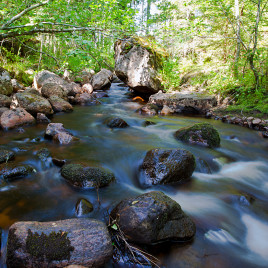Streams in the boreal forest emit more carbon dioxide than previously thought, a new study shows. Researchers discovered that previous studies on CO2 emissions from lakes and groundwater only studied the endpoints of streams and rivers. Studying carbon isotopes ratios from various points in groundwater allowed the researchers discovered previously unaccounted for CO2 emissions. The boreal forest […]
Tag: ecology
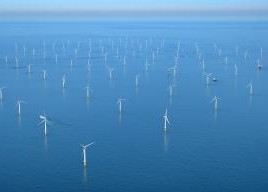
Seals forage near man-made structures
A new study shows that some harbour and grey seals are using man-made wind farms and undersea pipelines as foraging grounds. Seals were tagged with GPS tracking devices off the UK and Dutch coasts. Scientists noted that a few seals – up to 30 per cent in some populations – foraged near offshore wind farms, […]
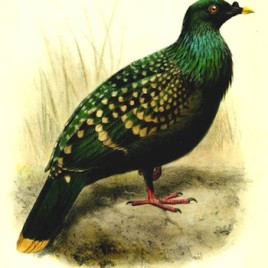
Spotted green pigeon was a unique species
DNA analysis has shed light on the origins of the mysterious spotted green pigeon, of which only one stuffed specimen remains. The specimen is held by the World Museum in Liverpool UK, but there is no record of where the pigeon was found, nor are there any records of sightings in the wild. DNA barcoding […]
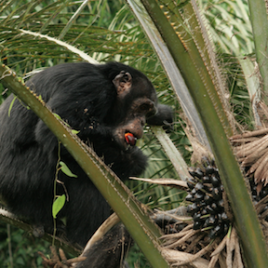
Palm oil agriculture could means trouble for Africa’s great apes
The booming oil palm industry in West and Central Africa could have a negative impact on great apes, a new study shows. The authors estimate that nearly 40% of the distribution of great ape species on unprotected lands overlaps with suitable oil palm areas. The countries most at risk are Gabon, Congo, and The Democratic […]
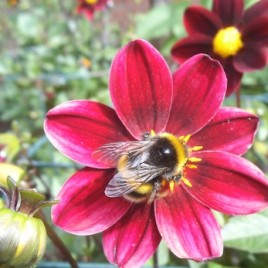
Exposure to pesticides impairs bees’ foraging ability
A new analysis confirms that exposure to pesticides – including one in the neonicotinoid (neonic) class – has a negative impact on bees’ foraging ability. The study used radio-frequency identification (RFID) tags to track 259 bees from 40 colonies over 4 weeks. Bees exposed to the neonic pesticide either by itself or mixed with another […]

Link drawn between pesticide use and bird declines
Researchers in the Netherlands have drawn a link between use of the neonicotinoid (neonic) pesticide imidacloprid and declines in insect-eating birds. The study found that in areas of the Netherlands where imidacloprid concentrations in surface water were highest – more than 20 nanograms per litre – bird populations tended to decline by 3.5 per cent […]
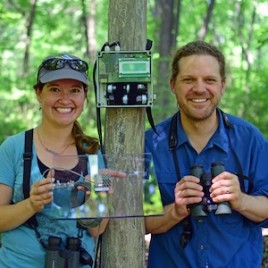
Night-time squawking helps track bird migration
New audio recordings confirm that Lake Erie is not a barrier to bird migration, but that birds pick their routes so as to stay above islands if possible. Migratory birds fly at night, so the team used audio recordings from the north shore of Lake Erie and from Pelee Island — in the middle of […]
Comment: Experts call for moratorium on new pipelines
In a Comment piece in Nature, Eight experts in environmental science, policy and risk call for a moratorium on building new oil pipelines in North America. Both Keystone XL pipeline (which would run from Alberta through the US Midwest) and Northern Gateway pipeline which would connect Alberta with a port on British Columbia’s coast “highlight […]
Can information and communications technology (ICT) help produce a greener Canada?
Imagine an app that helps monitor your water usage, or a “smart building” that tints its windows in response to sunlight in order to save on air conditioning costs. Such technologies exist, but putting them to work will require integration on a number of fronts: improving broadband access in all areas of the country; standardizing […]
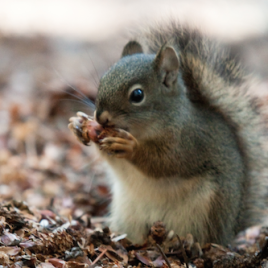
Do seed-eating squirrels impact the whole forest?
A new study shows that trees that store lots of fire-resistant seeds to prepare for forest fires end up attracting more seed-eating red squirrels, which provokes a cascading effect on the ability of forest to grow back after a fire. The study relies on three years of field study in Yellowstone park and applies to […]
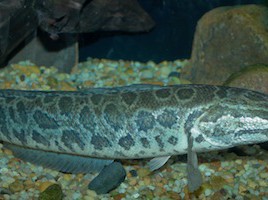
DNA barcoding could help catch invasive snakeheads
A new set of DNA barcodes could help combat the notoriously invasive fish known as snakeheads. Snakeheads are native to Asia and are believed to have been introduced to North American rivers by private collectors dumping their unwanted pets. Identification is difficult because the juveniles and adults can look very different, while fish from different […]
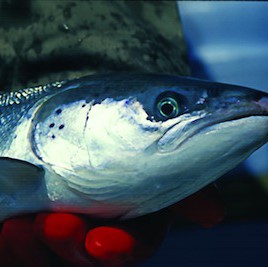
Atlantic Salmon Genome Sequenced
The sequenced genome of the Atlantic Salmon was announced at the 2nd International Conference on Integrative Salmonid Biology in Vancouver. The work was carried out by an international team that included scientists from Norway, Chile and Canada. Atlantic salmon aquaculture is a $600 million industry in Canada. Having a detailed genetic map for this species […]
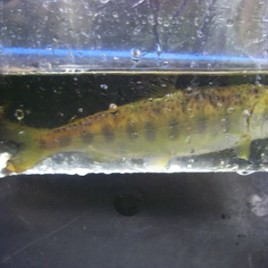
Pacific salmon species benefit each other
The number of juvenile coho salmon in a stream can be up to three times higher if pink or chum salmon were there the season before, according to a new paper. Juvenile coho have been known to scavenge the carcasses or eggs of their cousins, but most of the coho in the latest study emerged […]
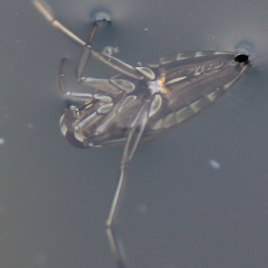
How bugs decide when to fly the coop
Many animals seek new habitat if they are too crowded or if there are too many predators, but new research suggests that the effect of these two factors can’t easily be separated. Researchers filled artificial pools with backswimmers, insects that normally swim but that can fly to a new pool if stressed. Introducing a predator […]
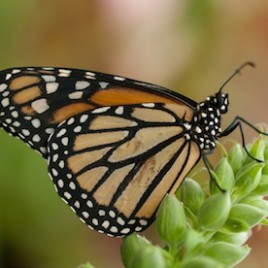
Milkweed needed to save monarchs
A new study bolsters the notion that a lack of milkweed in summer breeding grounds is contributing to the decline of the monarch butterfly. Previous research indicated that the decline of monarchs may be due to catastrophic die-offs in overwintering grounds in Mexico, caused by loss of forest habitat or extreme weather events linked to […]
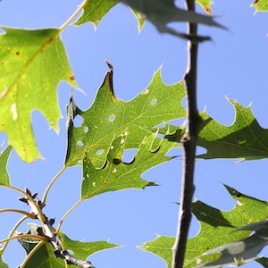
Plants – what’s eating them?
A new analysis of over 1000 plant species shows that on average, only about 5.3 percent of their leaves are eaten by insects and vertebrate grazers – less than a third of previous estimates. This means that most of the energy captured by photosynthesis doesn’t go ‘up’ the food chain, but instead is passed on […]
